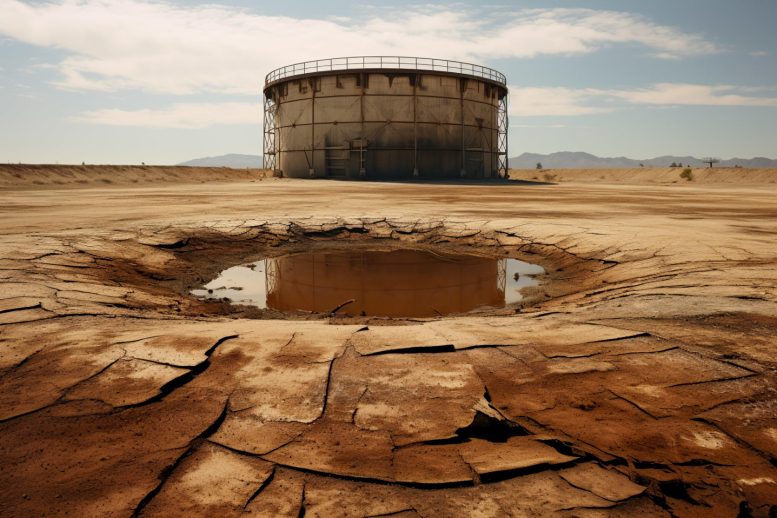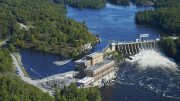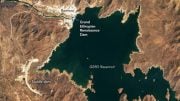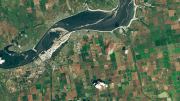
New reservoirs are failing to meet water storage expectations, signaling a potential global water supply issue, particularly in the developing global south, necessitating innovative strategies beyond mere reservoir construction.
Texas A&M researchers, who have analyzed satellite data from over 7,000 worldwide reservoirs, have discovered that despite the rise in total storage capacity, the filling rate is lower than expected.
Water is a crucial and irreplaceable part of daily human life. As the world’s population expands and global temperatures rise, the demand for water proportionally increases.
In the last twenty years, worldwide water reserves have been depleting, even though the total storage capacity has expanded due to the building of additional reservoirs.
Led by Dr. Huilin Gao, associate professor in the Zachry Department of Civil and Environmental Engineering at Texas A&M University, researchers used a new approach with satellite data to estimate the storage variations of 7,245 global reservoirs from 1999 to 2018.
The researchers published their findings in Nature Communications.
Overall, global reservoir storage increased at an annual rate of 28 cubic kilometers, attributed to the construction of new reservoirs. However, despite these efforts, the data reveals that the rate of reservoir filling is lower than anticipated.
“As the global population continues to grow in the 21st century, surface water reservoirs are increasingly being relied on to meet rising demands in the context of a changing climate,” Gao said. “However, the amount of water available in reservoirs and its trends have not been well quantified at the global scale.”
The researchers developed the Global Reservoir Storage dataset, freely available online to benefit decision-makers and the wider science community. It represents a significant advancement in tracking global reservoir storage conditions.
Given the projected decline in water runoff and the rising water demand, the observed trend of diminishing storage returns from reservoir construction is expected to continue, potentially impacting water supplies with significant implications. These findings indicate that addressing future water demands cannot rely solely on constructing new reservoirs, emphasizing the need for novel management strategies.
“Through this research, we share a new perspective for reevaluating the socio-economic benefits of new reservoir construction and the tension between growing water demand and lessening water availability in developing countries,” said Dr. Yao Li, a Texas A&M former postdoctoral researcher who is currently a professor at the School of Geographical Sciences at Southwest University.
The decline in reservoir storage is particularly prominent in the global south, including South Asia, Africa, and South America. Despite efforts to construct new reservoirs, the data shows that they fall short of expected filling levels.
The most significant decline is in South America and Africa, where growing populations contribute to an escalated water demand.
In contrast, reservoirs in the global north, including regions in North America and Europe, are experiencing an upward trend in reaching their maximum capacity. Reservoirs in high-latitude regions like the Great Lakes and Siberia exhibit comparatively higher storage capacities, primarily attributed to their lower population densities and lesser impacts from human activities.
The analysis did not consider the sedimentation process, and therefore the overall storage decline presented in this study is conservative.
Reference: “Diminishing storage returns of reservoir construction” by Yao Li, Gang Zhao, George H. Allen and Huilin Gao, 13 June 2023, Nature Communications.
DOI: 10.1038/s41467-023-38843-5
Other contributors to this research are Dr. Gang Zhao, a former postdoctoral fellow at the Carnegie Institute for Science in Stanford who is now a researcher at the Institute of Geographic Sciences and Natural Resources Research, and Dr. George H. Allen, assistant professor of Hydrology and Remote Sensing at Virginia Polytechnic and State University in Blacksburg, Virginia. Both Li and Zhao are former Texas A&M students who worked in Dr. Gao’s research group, Gao Hydrology Research Group.
This research is funded by NASA and the Texas A&M President’s Excellence Fund X-Grants Program.









Be the first to comment on "Analysis of Over 7,000 Reservoirs Shows Worldwide Water Reserves Are Depleting"